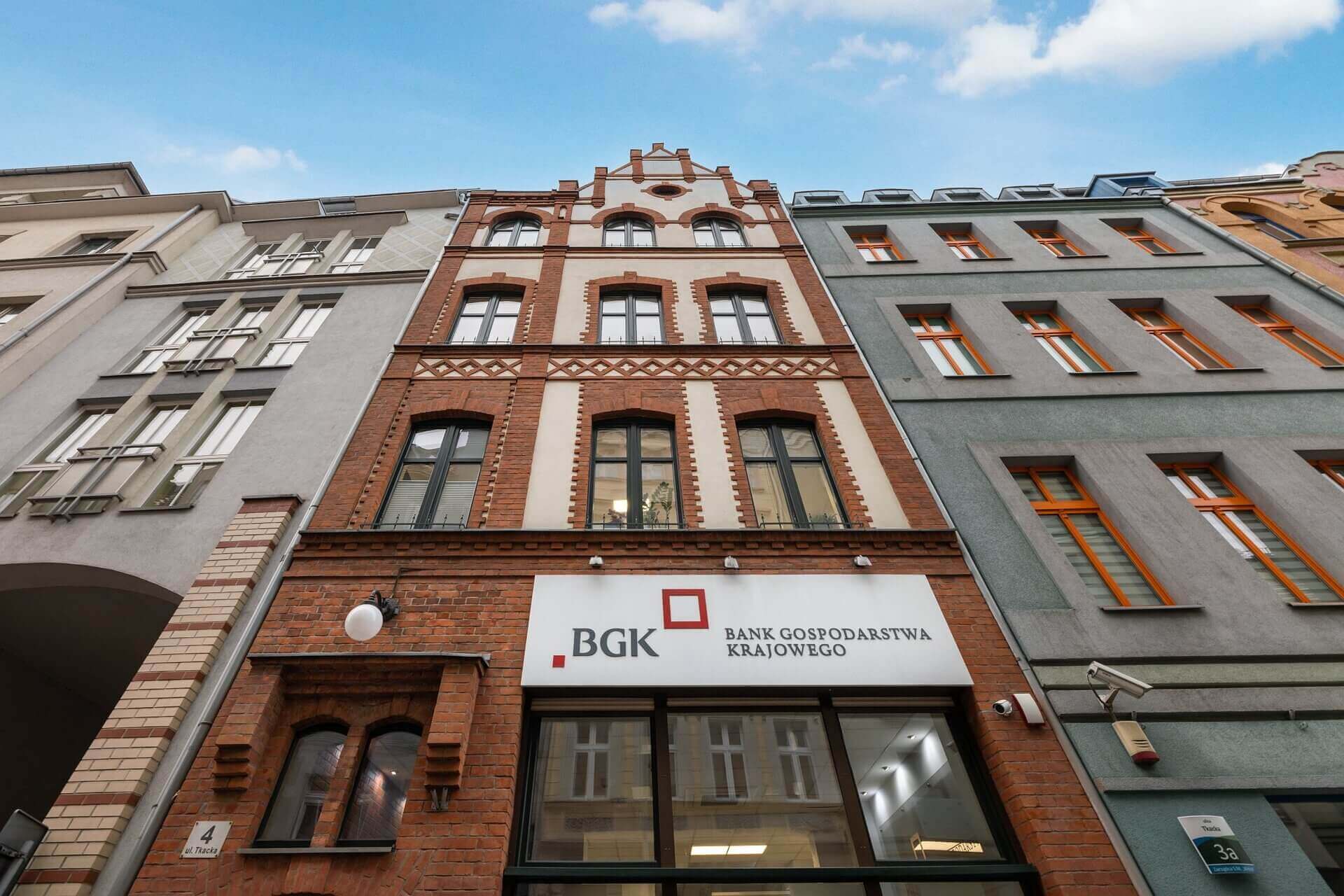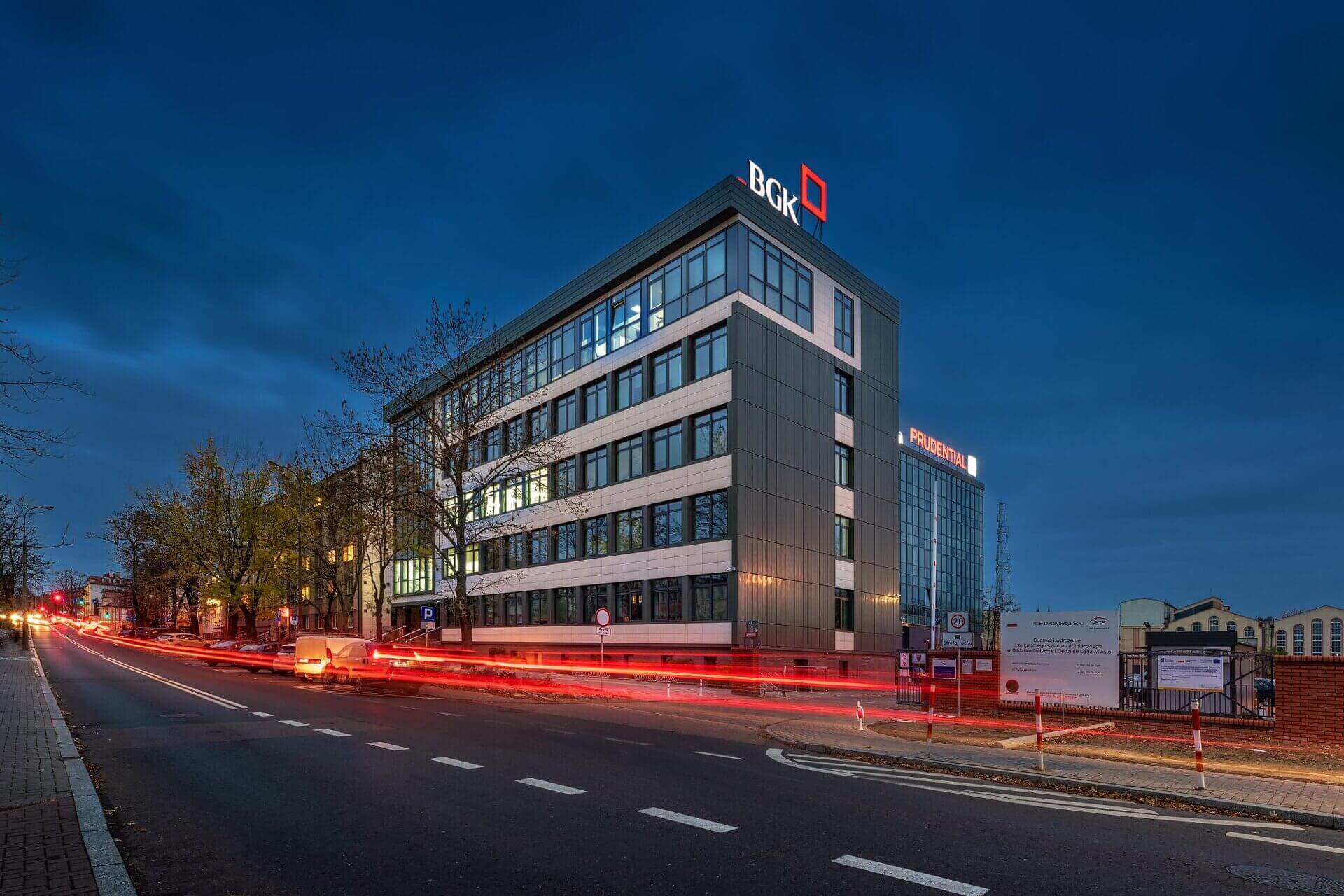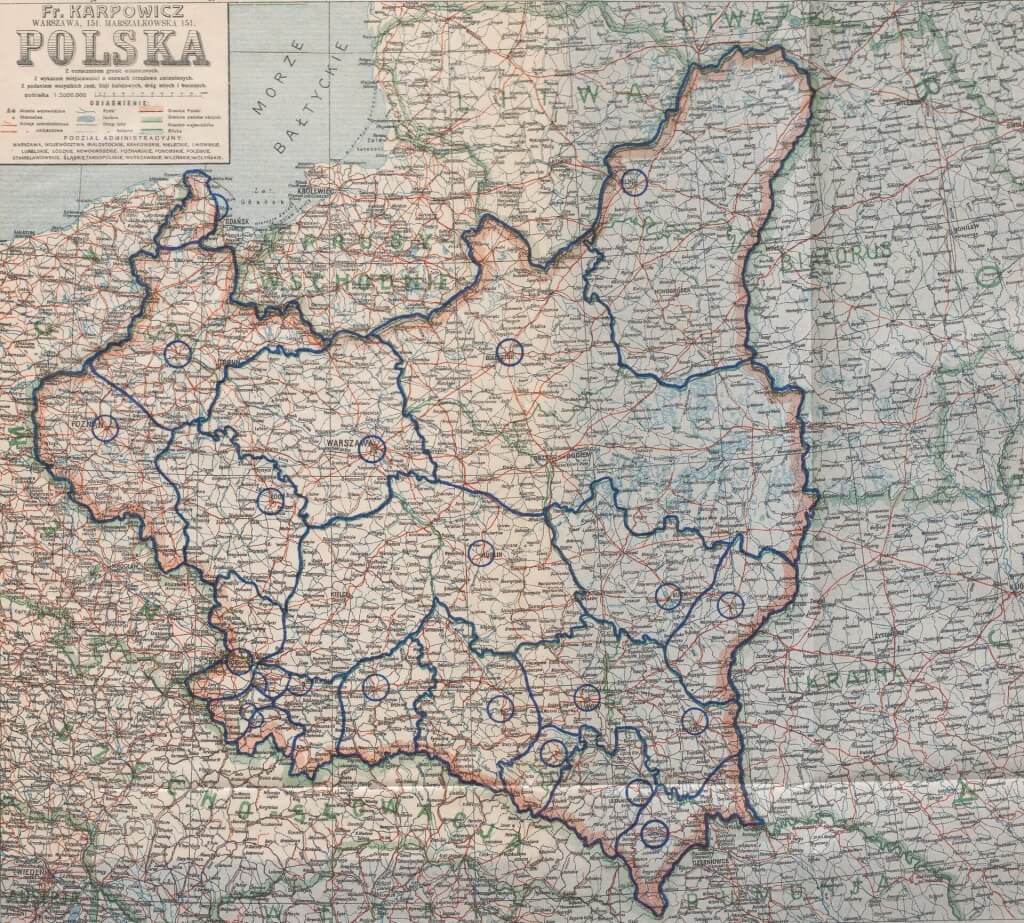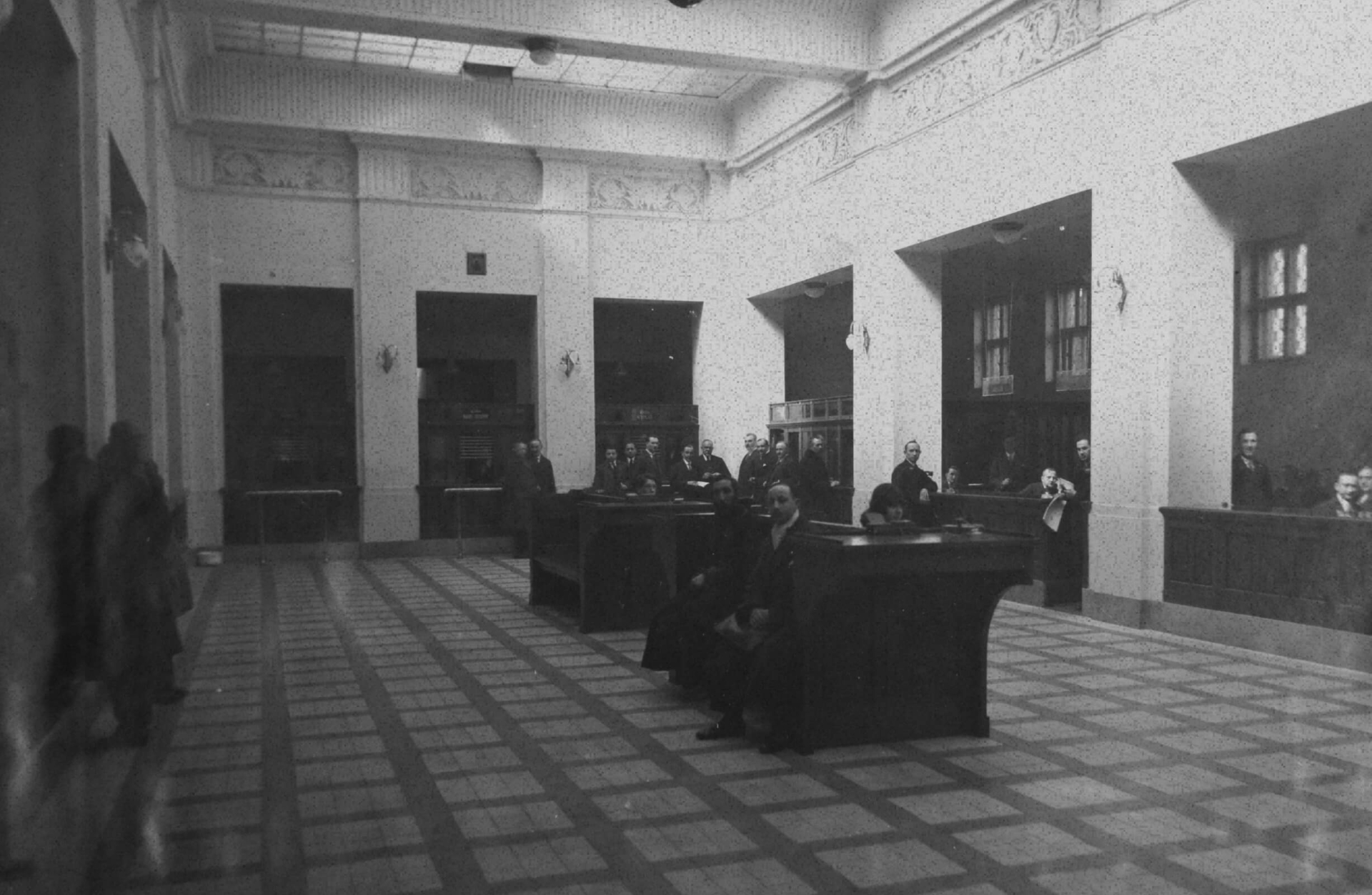
BGK`s network evolution
Where the BGK is, there’s growth – how the bank has densified its branch network over the years
Bank Gospodarstwa Krajowego was established in 1924 as a result of the merger of three state banks originating in Galicia – the Polish National Bank, the State Reconstruction Bank and the Credit Facility of the Cities of Lesser Poland. All of these institutions had their infrastructure, which was taken over by BGK, and which was subsequently developed. Times were unstable, however, and the number and distribution of the bank’s branches were influenced not only by management decisions. The shape of the branch network was also determined by historical events, such as, for example, World War II, the drawing of new national borders or the change of Poland’s economic system.
Branches from 1924 to 1939
Bank Gospodarstwa Krajowego inherited an extensive network of branches from the Galician and later nationwide Polish National Bank. Depending on their size, they were called branches (the equivalent of a branch), depositories (smaller units, most with their own offices), and substitutes, or PBK representative offices to other financial institutions.
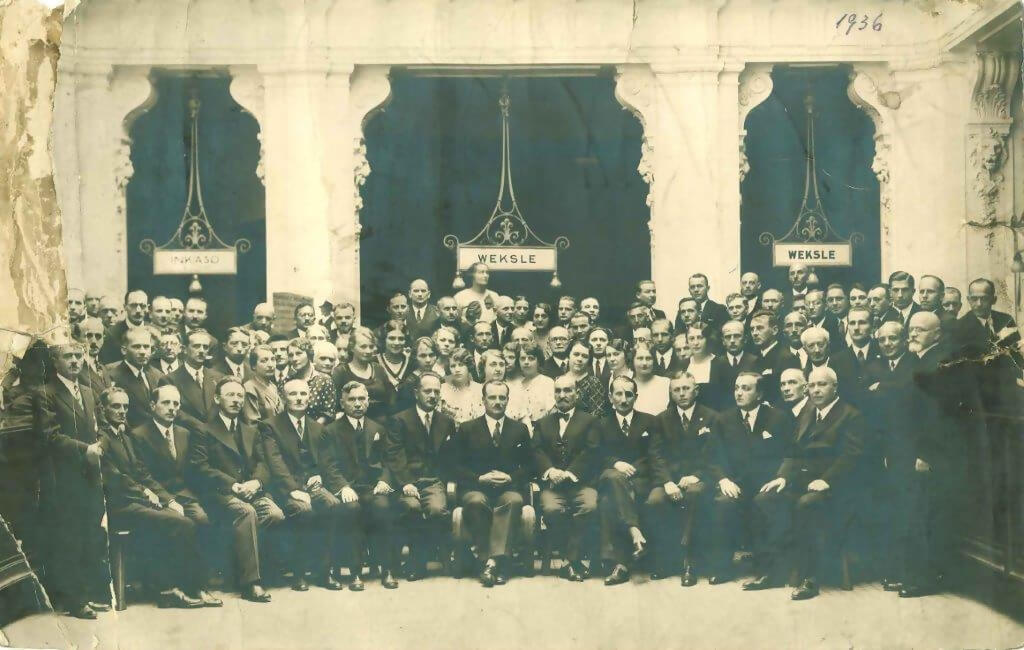
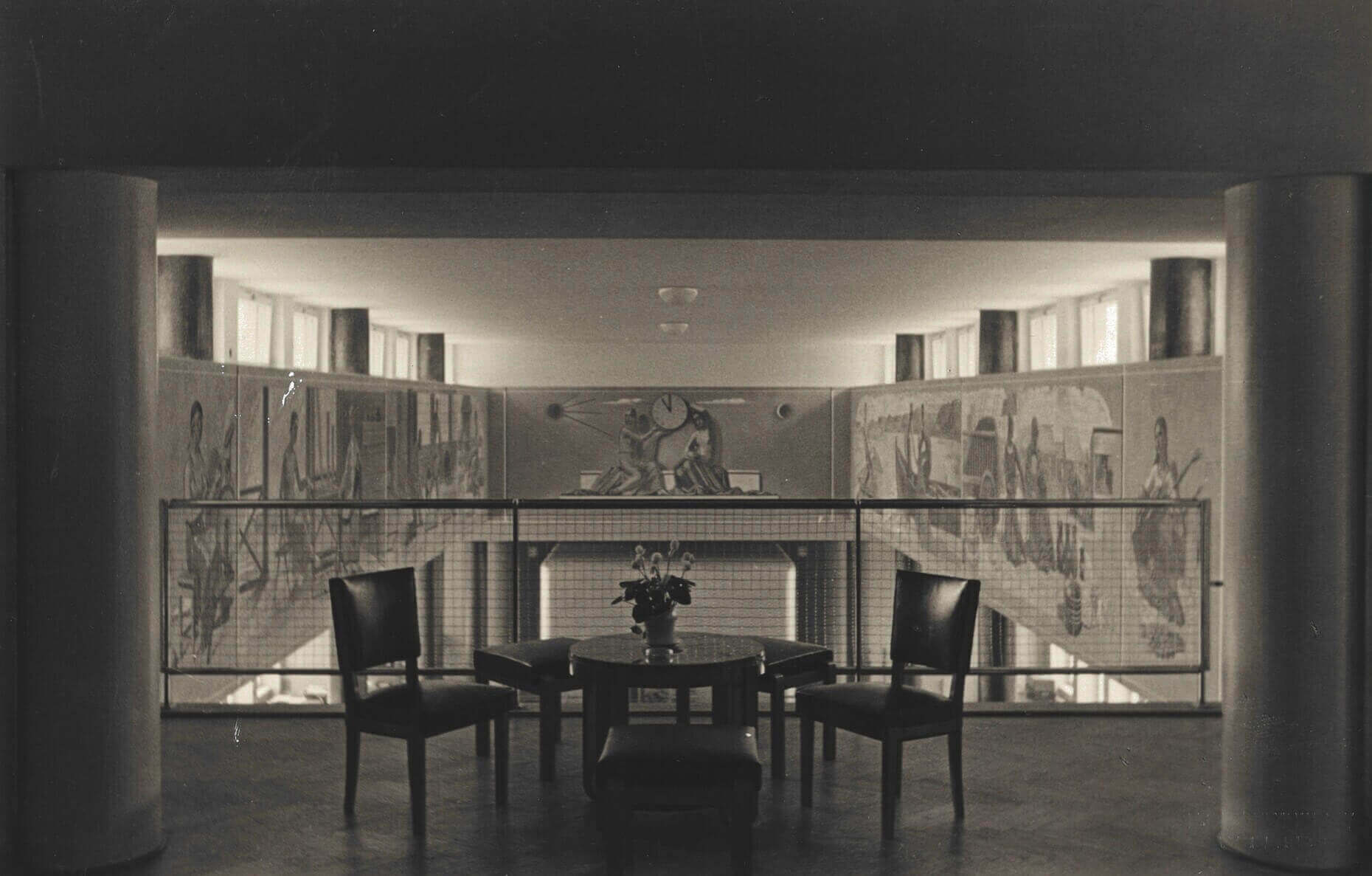
When BGK began operations, it had a national network of thirteen subsidiaries (in Biala, Bydgoszcz, Cieszyn, Drohobycz, Katowice, Krakow, Lublin, Lviv, Przemyśl, Poznan, Rivne, Stanislawow and Tarnow), five expatriate offices (in Andrychow, Kolomyia, Oswiecim, Wadowice and Zywiec) and seventy depots in Lesser Poland.
The bank also opened new outlets, mainly branches and representative offices. Initially, only the Lviv branch and a cell in Warsaw operating under the name of Construction Branch (headquartered at 17 Sienna Street) had the status of a branch. In the second year of BGK’s operation, a branch was established in Vilnius and Bialystok.
Not counting the Main Branch (established in December 1934 at the headquarters), on the outbreak of World War II the BGK had 21 branches. That is, the same number as at the end of 1925. However, their distribution changed. Between 1924 and 1929, BGK closed its branches in Andrychów, Cieszyn, Oświęcim, Wadowice, Zywiec, Przemyśl and Lutsk. As a result, in 1939 BGK branches were located in the following cities: Biała, Bialystok, Bydgoszcz, Cieszyn, Drohobych, Gdynia, Katowice, Kolomyja, Krakow, Lublin, Lviv, Lodz, Pinsk, Poznan, Radom, Rivne, Rzeszow, Stanislawow, Tarnow, Vilna and Wloclawek.
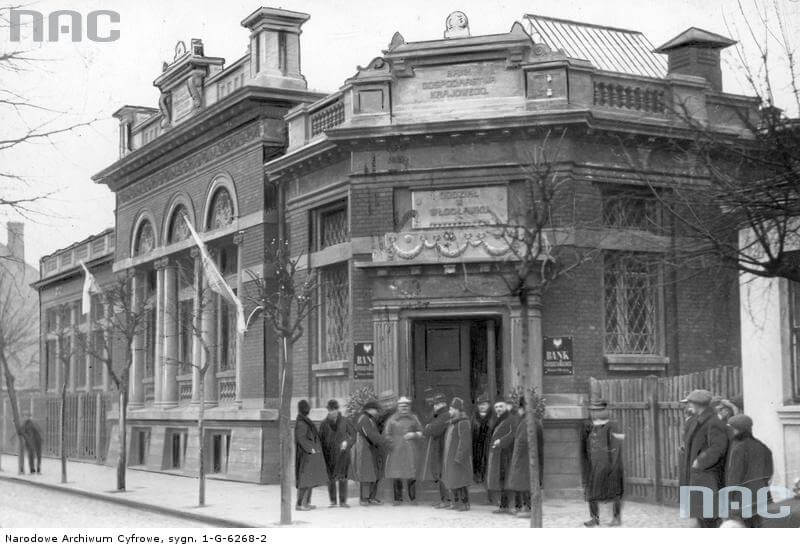
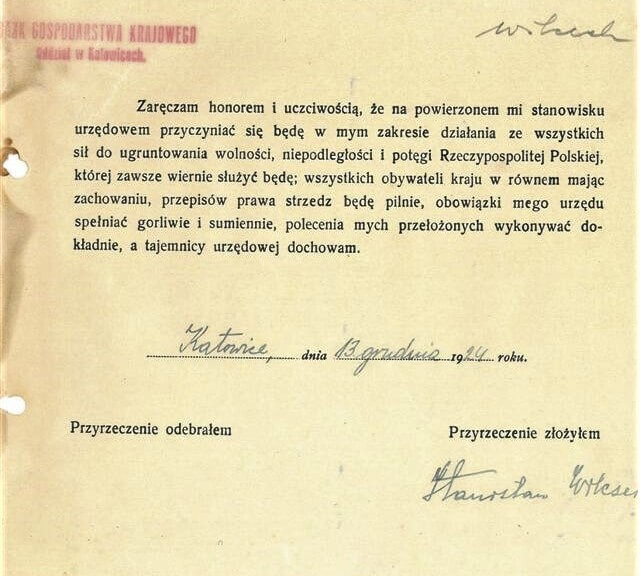
BGK also planned to open a branch in Gdansk, which was granted the status of a Free City as a result of the Treaty of Versailles. At a meeting of the supervisory board on June 18, 1926, it was decided that instead of opening a BGK branch in Gdansk, a Polish-English bank would be established to safeguard Poland’s economic interests under its own banner. On November 23, 1926, The British and Polish Trade Bank AG, known as Trabank for short, began operations. It operated until the outbreak of World War II.
1939-1945 – emigration years
During the war years, the history of Bank Gospodarstwa Krajowego is the story of wandering in exile, accompanying the fate of the Polish government in exile in France and later also in Great Britain.
After the defeat in September, the headquarters of BGK’s émigré leadership became Bucharest and Paris. On November 4, 1940, part of the Bucharest BGK office moved with the Polish ambassadors from the Romanian capital to Tel-Aviv. The BGK files were deposited in the Polish embassy in Ankara and from there, via South Africa, they went to London in 1943. Emigrant representative offices of the bank were opened in the US, Zurich and Tehran. After Germany invaded France, the Paris office of the BGK evacuated with its most important documents to Angers, and from there, via Spain and Portugal, to London, where in August 1940 it resumed operations.
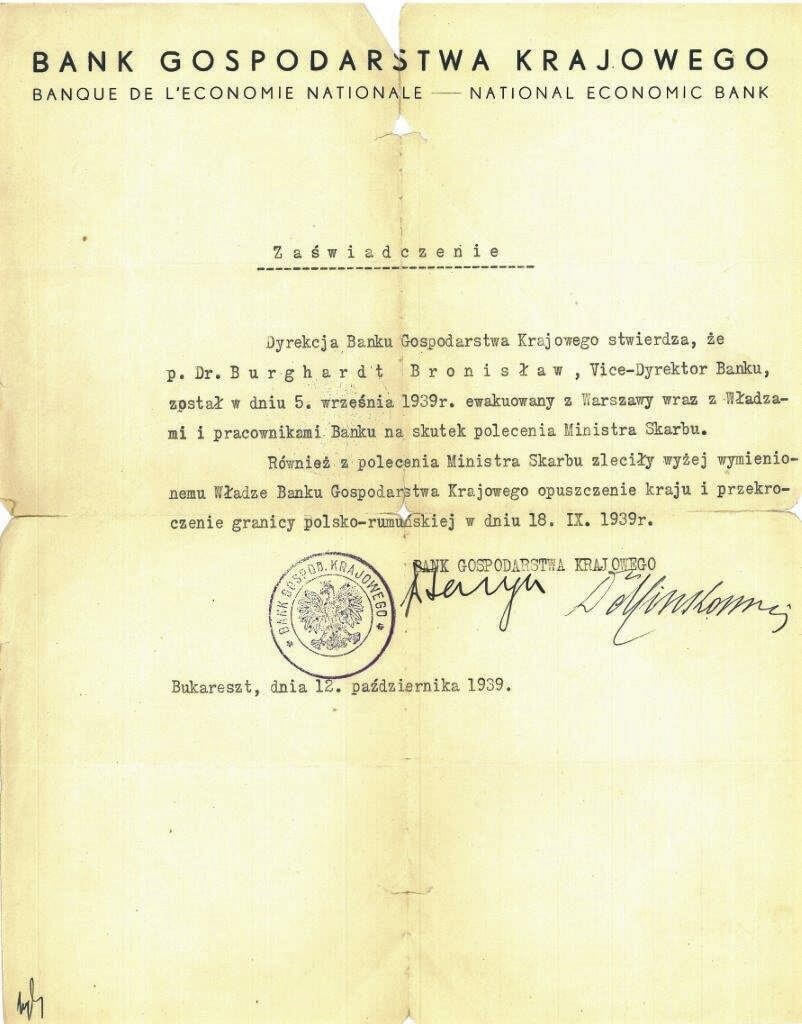
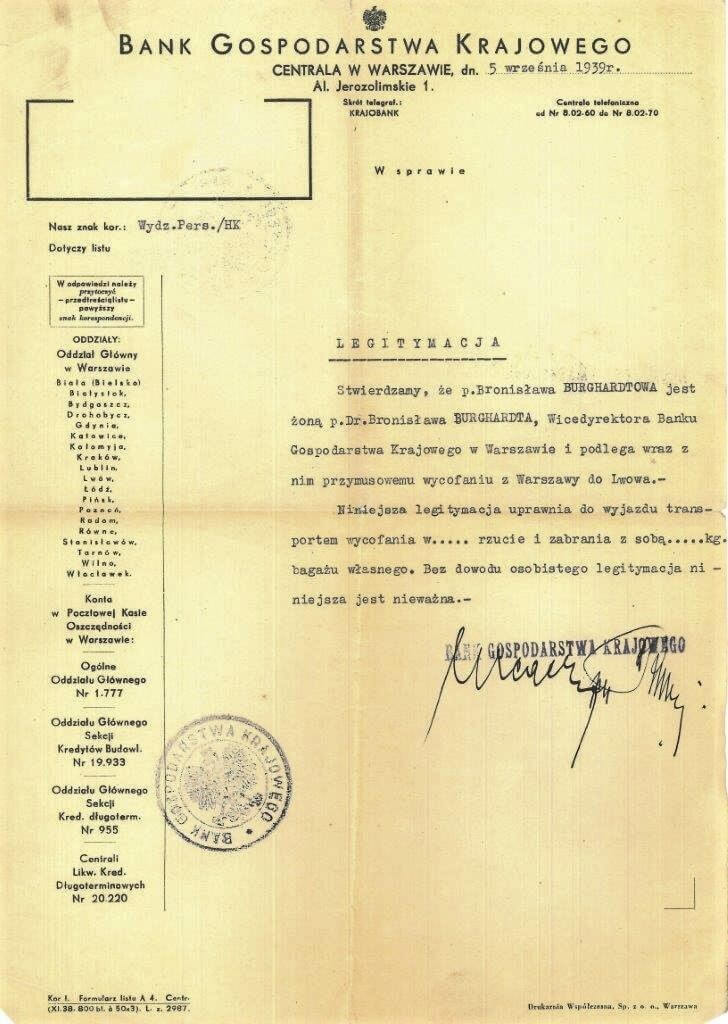
Shortly after the war 1944-1951
The post-war history of BGK began while the conflict was still ongoing. When the Red Army installed a communist government in Lublin, the BGK branch there began to perform the duties of the headquarters. This happened on August 12, 1944, on the initiative of the bank’s pre-war employees. A month later, they also opened a branch in Rzeszow.
Due to the destruction in Warsaw, it was Lodz that was the de facto capital of Poland shortly after the war. In February 1945, a branch and headquarters of the institution were opened in the pre-war headquarters of the Lodz branch of BGK, at 63 Kościuszki Avenue. In the same year, in Warsaw’s Praga district, in one of the office buildings of the Warsaw Vodka Factory “Koneser” at 27 Ząbkowska Street, a Warsaw branch of the bank was established.
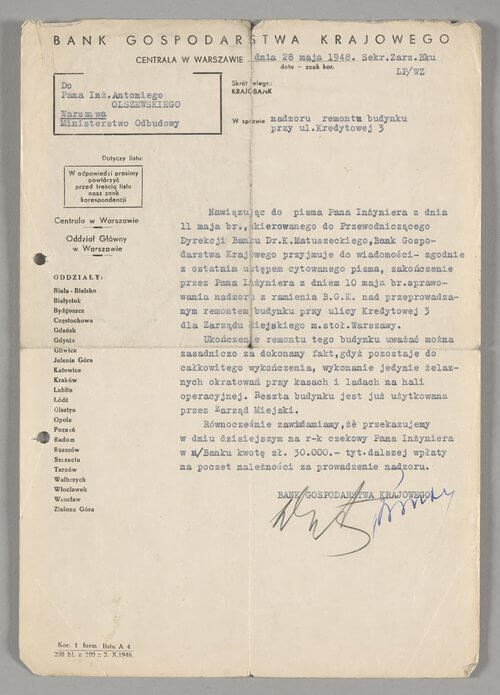
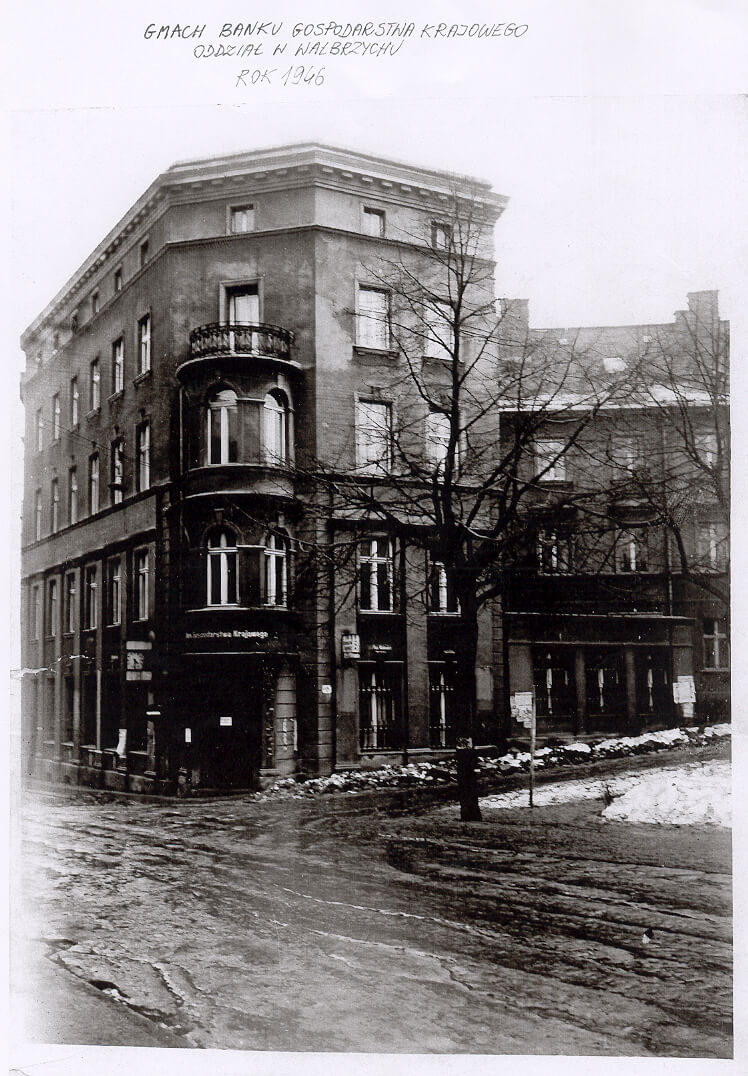
In March of 1945, more branches were opened – in Bydgoszcz, Katowice and Wloclawek, in April – in Bialystok and Warsaw, in May, Gdynia and Poznan were launched, and in June – branches in Gdansk and Gliwice. On July 1, 1945, there were 17 BGK branches in the country.
In 1946, branches were opened in Czestochowa, Jelenia Gora, Olsztyn, Szczecin, Walbrzych and Zielona Gora. In 1947 in Kalisz, in 1948 in Bytom, Elblag and Sosnowiec, and in 1949 in Kielce. In 1947, the headquarters was moved back to Warsaw. From 1951 to 1957, the BGK’s branch structures were taken over by the National Bank of Poland and the newly established Investment Bank, which was itself absorbed into the NBP shortly thereafter.
Branches and regions from 1989 to 2024
After its reactivation in 1989, BGK’s branch structure did not begin to develop until after 2000. Before that, there were two branches in Warsaw (with a network of service points and the BGK Brokerage House), and in 1998. – due to the need to handle loans and credits for flood victims, a branch was established in Wroclaw. The same year also saw the opening of three National Housing Fund Service Points: in Cracow, Poznan and Szczecin, and in 2000 a fourth – in Pila.
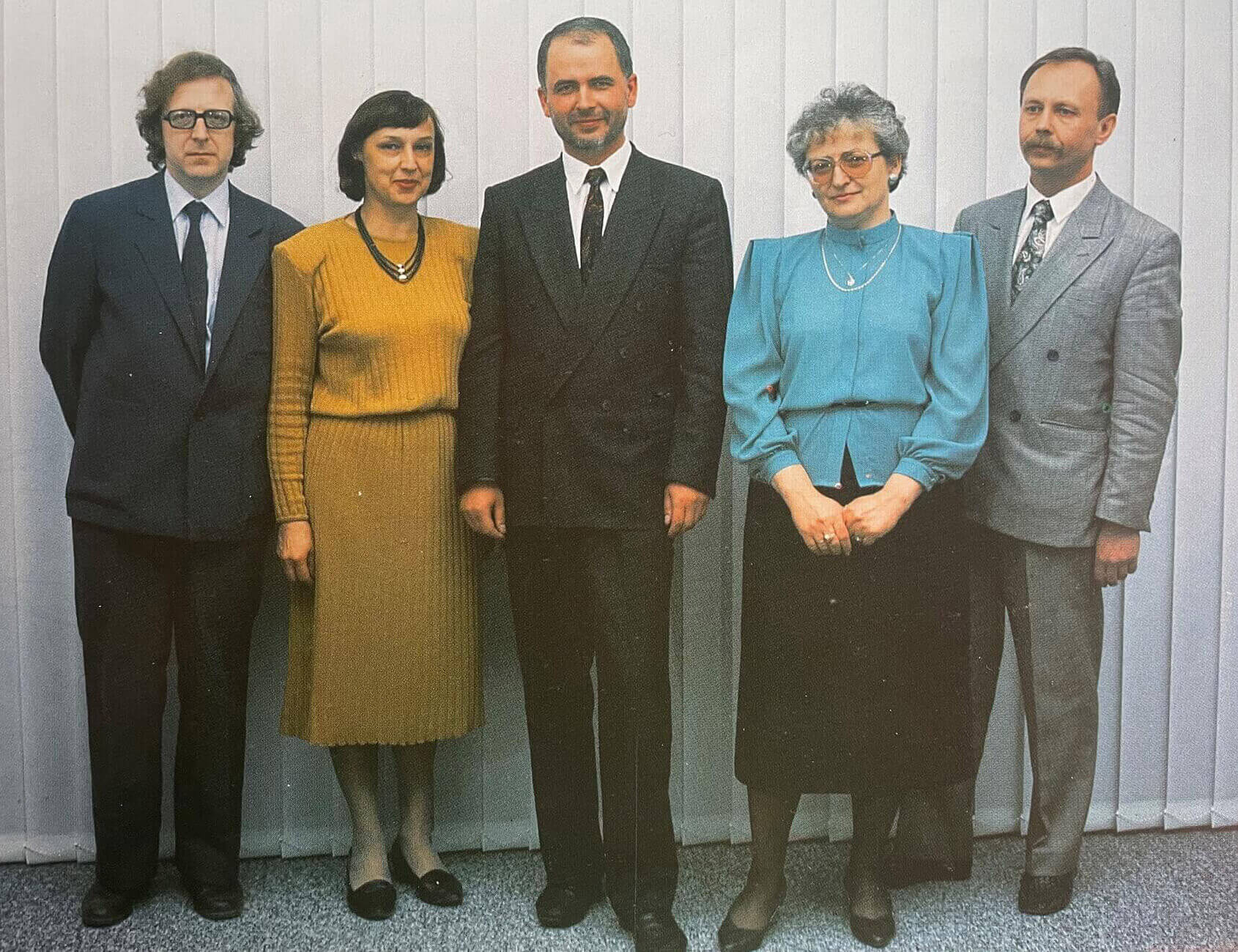
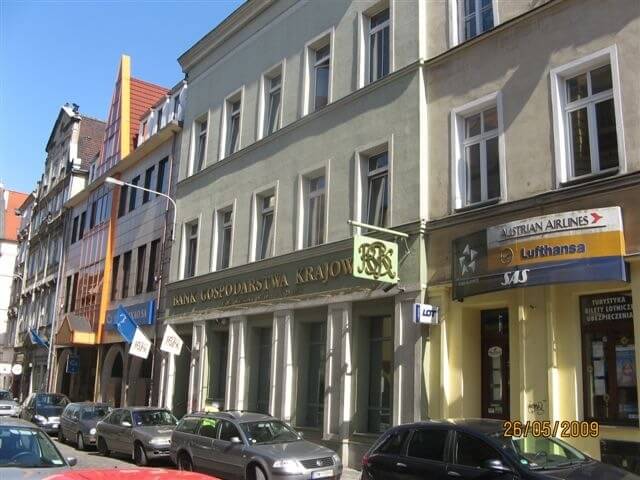
In subsequent years, the structure changed due to the acquisition of NBP field offices, consolidation with Bud-Bank and branch optimization.
This is how the branch optimization strategy was described in 2010. BGK’s then president, Tomasz Mirończuk: “BGK’s planned future area of operation (focus on servicing central budget units and local governments; abandonment of the retail client) implies that there is no need to have several branches in one locality or located in close proximity to each other. Accordingly, a review of BGK’s functioning branches was carried out in terms of geographic proximity to branches in a given province. Two provinces, Mazowieckie and Pomorskie, have functioning branches (I, II and III O/Warszawa and Gdańsk and Gdynia branches, respectively) in close proximity. Financial analysis by customer segment indicates that the consolidation of the aforementioned branches into two branches (Warsaw Branch and Gdansk Branch) would significantly reduce the operating costs of the branches in these provinces with little negative impact on the level of revenues (mainly in the segment of natural persons).”.
At the beginning of March of 2018, the process of transforming BGK branches into regional business support centres began. From now on, the offer of the Regions, located in 16 provincial cities, provides for sectoral advice and is tailored to the needs of the regions. BGK Regions have become competence centres for the development of the provinces, providing advice on the selection of support instruments for companies, local government units or the public finance sector.
In 2018 BGK began activities related to the establishment of foreign representative offices. The purpose of their establishment was to promote the Polish economy and development strategies in the international arena, support Polish companies in their foreign expansion, as well as actively participate in the process of creating and amending international legislation. In 2018, the first representative office was established in Brussels, in 2019 a representative office in Frankfurt am Main and London, and in 2020 – in Amsterdam.
